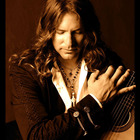Welcome to one of the most active flamenco sites on the Internet. Guests can read most posts but if you want to participate click here to register.
This site is dedicated to the memory of Paco de Lucía, Ron Mitchell, Guy Williams, Linda Elvira, Philip John Lee, Craig Eros, Ben Woods, David Serva and Tom Blackshear who went ahead of us.
We receive 12,200 visitors a month from 200 countries and 1.7 million page impressions a year. To advertise on this site please contact us.
|

|
|
Solea in A
|
You are logged in as Guest
|
|
Users viewing this topic: none
|
|
Login  | |
|

   
Richard Jernigan
Posts: 3432
Joined: Jan. 20 2004
From: Austin, Texas USA

|
 RE: Solea in A (in reply to mark74) RE: Solea in A (in reply to mark74)
|
|
|
quote:
ORIGINAL: mark74
I guess what I'm trying to isolate is that if the chord changes aren't what distinguishes a solea from a siguiriyas then what does?
As is often the case, the decisive factor is the compás.
Typical soleá compás: 1 2 3 4 5 6 7 8 9 10 11 12
Typical siguiriyas compás: short, short, long, long, short
The long beats are 1 1/2 times as long as the short ones. Siguiriyas is sometimes taught as twelve beats, but in my opinion this just confuses the real feeling.
{8 9} {10 11} {12 1 2} {3 4 5} {6 7}
The short and long beats are enclosed in {}
Virtuoso guitarists, going back at least to Ramon Montoya, typically introduce syncopations into siguiriyas. In standard notation, these are often written in alternating bars of 3/4 and 6/8, with eighth notes having a constant duration from bar to bar, corresponding to the 12 beats, and accents marking out the sycopations. But the basic compás is still the long and short beats described above. A problem with this notation is that the compás begins on the second beat of a 3/4 bar, continues through the 6/8 bar, and ends on the first beat of the succeeding 3/4 bar.
If you get hold of a piece of notation like this, and you're just learning siguiriyas, my advice is to get out your pencil and mark the short and long beats.
Better advice than this is what Ricardo gives. Just play the compás until it sinks in, and forget about counting. And try clapping the compás to what you´re listening to. But most commercially recorded guitarists will confuse you with their sycopations at some point.
Of course there are typical chord and melody patterns for each palo, but these constantly evolve. The compás will tell you which is which.
RNJ
|
|
|
|
REPORT THIS POST AS INAPPROPRIATE |
Date Nov. 8 2013 17:52:18
 |
|

   
Erik van Goch
Posts: 1787
Joined: Jul. 17 2012
From: Netherlands

|
 RE: Solea in A (in reply to Richard Jernigan) RE: Solea in A (in reply to Richard Jernigan)
|
|
|
quote:
ORIGINAL: Richard Jernigan
quote:
ORIGINAL: mark74
I guess what I'm trying to isolate is that if the chord changes aren't what distinguishes a solea from a siguiriyas then what does?
As is often the case, the decisive factor is the compás.
Typical soleá compás: 1 2 3 4 5 6 7 8 9 10 11 12
Typical siguiriyas compás: short, short, long, long, short
Before i entered Paco Peña's school of flamenco guitar i never paid attention to the names of the various styles and their underlaying compas. Once a week we had 1 hour looking at those aspects of flamenco which were to simple for my classmates (who knew all this stuff already) but quit a challenge for me. Whenever we had to name music extracts i sometimes confused soleares with seguiriyas as well.
Like Richard explained they have a totally different pulse. The <short,short,long,long,short> pulse is actually counted
1 (and) 2 (and) 3 (and a) 4 (and a) 5 (and)
and can be annotated just like it is counted ( 5 beats two of which are halve a beat longer) Both my father and Paco Serrano (his student in music theory, didactics and the art of music notation) annotate seguiriyas in front of the line. This page about Paco's new book shows a written page of both soleares/seguiriyas:
http://www.foroflamenco.com/tm.asp?m=209248&mpage=1&p=&tmode=1&smode=1&key=manual%2Cde
I explain a bit of the compas characteristics of seguiriyas on the bottom of this page if you want to study it in more detail.
http://www.foroflamenco.com/tm.asp?m=211873&appid=&p=&mpage=1&key=&tmode=1&smode=1&s=#212021
|
|
|
|
REPORT THIS POST AS INAPPROPRIATE |
Date Nov. 9 2013 18:04:50
 |
|
 New Messages New Messages |
 No New Messages No New Messages |
 Hot Topic w/ New Messages Hot Topic w/ New Messages |
 Hot Topic w/o New Messages Hot Topic w/o New Messages |
 Locked w/ New Messages Locked w/ New Messages |
 Locked w/o New Messages Locked w/o New Messages |
|
 Post New Thread
Post New Thread
 Reply to Message
Reply to Message
 Post New Poll
Post New Poll
 Submit Vote
Submit Vote
 Delete My Own Post
Delete My Own Post
 Delete My Own Thread
Delete My Own Thread
 Rate Posts
Rate Posts
|
|
|
Forum Software powered by ASP Playground Advanced Edition 2.0.5
Copyright © 2000 - 2003 ASPPlayground.NET |
6.347656E-02 secs.
|


 Printable Version
Printable Version









 New Messages
New Messages No New Messages
No New Messages Hot Topic w/ New Messages
Hot Topic w/ New Messages Hot Topic w/o New Messages
Hot Topic w/o New Messages Locked w/ New Messages
Locked w/ New Messages Locked w/o New Messages
Locked w/o New Messages Post New Thread
Post New Thread